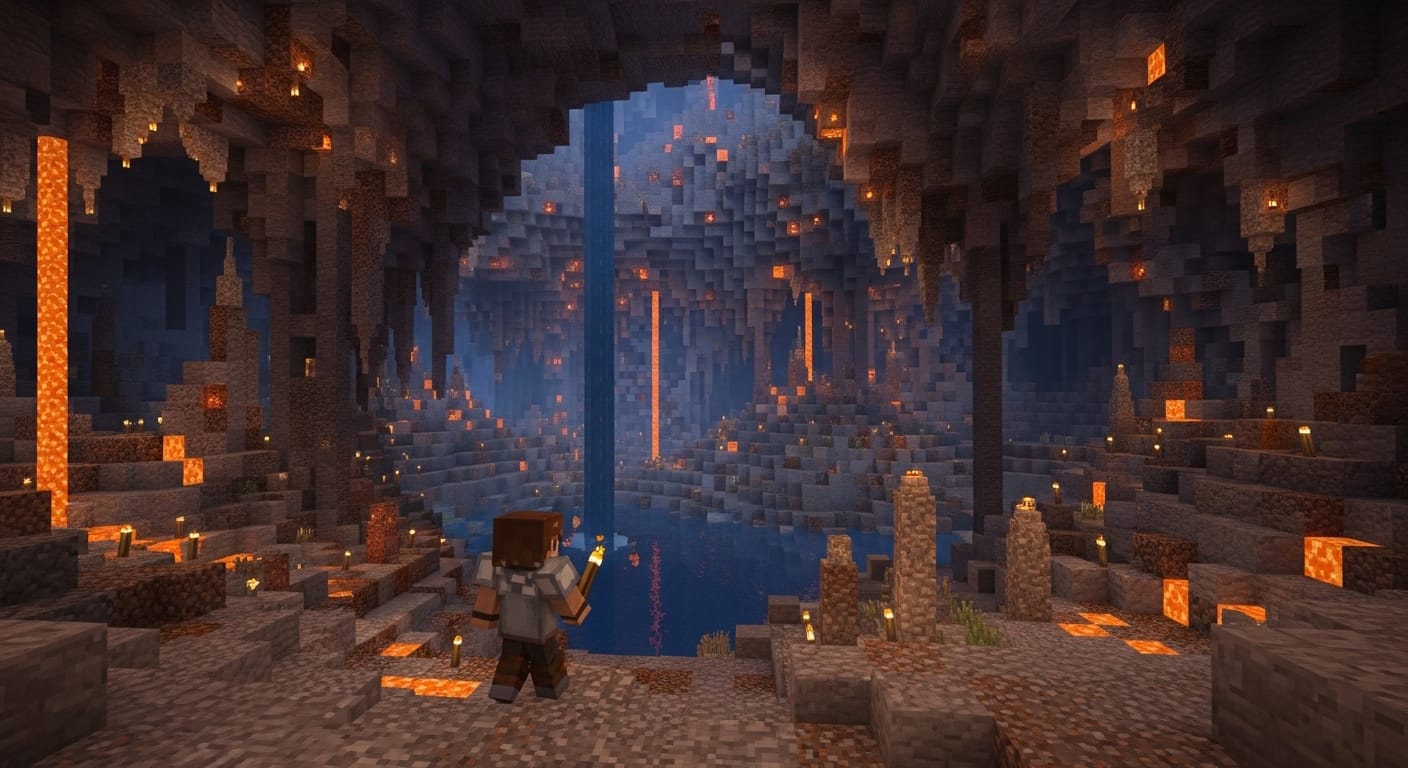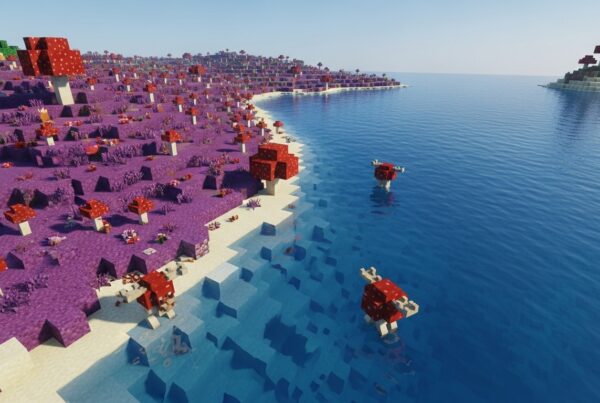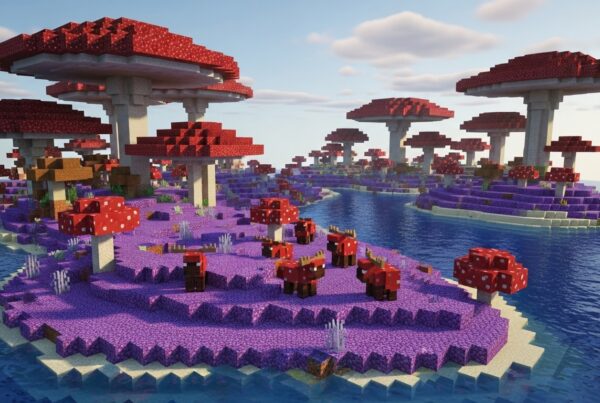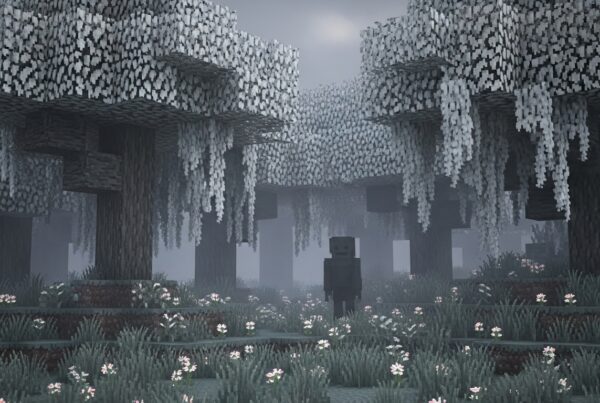The Dripstone Caves Biome is one of the most breathtaking underground environments in Minecraft, introduced in the Caves & Cliffs Update (1.18). With immense caverns, sharp stalactites, and towering stalagmites, this biome adds realism, beauty, and danger to your underground adventures.
Inside these rocky halls, players will encounter rich copper deposits, valuable ores, and hazardous terrain filled with traps and mobs. Whether you’re mining resources, building an underground base, or exploring for fun, this guide covers everything you need to know about Minecraft’s Dripstone Caves Biome — including how to find it, what to expect, and how to survive.
How to Find Dripstone Caves
Dripstone Caves generate deep underground in the Overworld, replacing portions of regular cave systems. They are commonly found below Y=0, but their height and size can vary based on world generation.
Key generation facts:
- Typically spawn beneath inland areas rather than under oceans or coastlines.
- Can appear at almost any underground depth, but are most common in mid-to-deep layers.
- Large openings and ravines sometimes expose them to the surface.
- The biome’s presence is indicated by clusters of pointed dripstone hanging from ceilings or rising from the ground.
Exploration tips:
- Bring torches, food, and a water bucket for lighting, healing, and fall safety.
- Use spectator mode or the /locate biome dripstone_caves command to find one in creative or testing worlds.
- Explore inland caves or mountainous terrain for better chances of discovery.
Environment and Terrain Features
Dripstone Caves are rugged and awe-inspiring, with jagged formations and a natural, earthy atmosphere.
Distinctive terrain features:
- Pointed Dripstone and Dripstone Blocks: Form stalactites and stalagmites.
- Lava and Water Interactions: Lava dripping into cauldrons can create a renewable lava source, while water drips can slowly grow new dripstone formations.
- Ambience: Expect dim lighting, echoing sounds, and occasional lava pools.
- Cavern scale: These caves can span enormous chambers, often linking to other biomes such as Lush Caves or Deep Dark areas.
Because of uneven terrain and hidden hazards, players should watch their step and carry blocks or scaffolding for safe climbing.
Mobs Found in Dripstone Caves
Like most underground areas, Dripstone Caves are home to many hostile mobs, creating constant danger for explorers.
Common mobs:
- Zombies, Skeletons, Creepers, Spiders
- Bats (ambient, non-hostile)
- Glow Squid (in flooded sections or aquifers)
- Drowned (can spawn in large underground pools)
Survival tip: Keep areas lit with torches and carry a shield to block skeleton arrows. Because of vertical spaces and drops, long-range combat (bows or crossbows) is safer than melee in most cases.
Blocks and Resources
The biome’s rocky structure hides several valuable materials.
Unique Blocks:
- Pointed Dripstone: Used for decoration, traps, and renewable lava farms.
- Dripstone Block: A solid block used structurally or for growing pointed dripstone.
Common Ores:
- Copper Ore: Spawns in larger-than-normal veins within Dripstone Caves.
- Iron Ore: Found frequently on exposed surfaces.
- Coal and Redstone: Appear less often but can still be found along walls.
Collection and usage tips:
- Use a pickaxe to safely mine dripstone blocks.
- Avoid mining above you — falling stalactites cause heavy damage.
- Set up a dripstone farm by placing a pointed dripstone beneath a block of water (or lava) above a dripstone block — over time, new dripstone will slowly form.
- Use dripstone for:
- Renewable Lava Source: Lava drips into cauldrons below.
- Natural Traps: Falling stalactites deal damage to mobs or players.
- Aesthetic Builds: Great for cave bases or natural structures.
Structures and Generation
While Dripstone Caves have no unique structures, they often intersect with other underground biomes:
- Mineshafts: Commonly run through dripstone chambers.
- Lush Caves: Occasionally connect, creating striking visual contrasts.
- Strongholds: May generate near or within large dripstone systems.
These intersections create excellent opportunities for exploration, resource gathering, and creative builds.
Comparison: Dripstone Caves vs Other Cave Biomes
| Feature | Dripstone Caves | Lush Caves | Deep Dark |
|---|---|---|---|
| Primary Blocks | Dripstone, Stone, Deepslate | Clay, Moss, Azalea | Sculk, Deepslate |
| Atmosphere | Rugged, rocky, hazardous | Peaceful, green, glowing | Dark, eerie, silent |
| Mob Density | Moderate to high | Low | High (Wardens) |
| Resources | Copper, Iron, Lava | Glow Berries, Moss Blocks | Sculk Sensors, Echo Shards |
| Dangers | Falling dripstone, mobs, lava | Minimal | Wardens, darkness effect |
This table shows how Dripstone Caves strike a balance between challenge and reward, offering both beauty and danger.
Survival Tips and Strategies
Exploring Dripstone Caves safely requires careful planning and smart resource use.
Recommended Gear:
- Armor: At least Iron; Diamond or Netherite for deep expeditions.
- Weapons: Sword and Bow/Crossbow.
- Tools: Pickaxe, Bucket (water), Torches, Blocks for building bridges.
Survival Strategies:
- Avoid stalactite ceilings: Breaking or explosions can cause them to fall and deal heavy damage.
- Use dripstone to your advantage: Build traps or renewable lava farms.
- Light your path: Place torches on the right-hand side to mark direction.
- Create safe zones: Build small bases with crafting tables, furnaces, and chests.
- Bring extra food: Long cave expeditions can be draining.
Bonus tip: Lava in Dripstone Caves makes it ideal for farming obsidian with a water bucket — a great way to stock up for Nether portals.
Surface Clues and Exploration Strategy
Unlike some biomes, Dripstone Caves have no obvious surface indicator. However, you can improve your chances by:
- Searching inland cave openings rather than coastal ones.
- Listening for echoing cave sounds underground.
- Using ravines or deep gorges as entry points.
- Exploring mountainous areas, as they often connect to large underground networks.
If you’re in a world with large cave openings, look for the telltale sharp dripstone spikes inside — a clear sign you’ve found this biome.
Farming Dripstone and Renewable Lava
One of the most useful mechanics in this biome is the ability to create renewable lava.
To make a lava farm:
- Place a Dripstone Block in the ceiling.
- Hang a Pointed Dripstone from its underside.
- Place a Cauldron beneath it.
- Pour lava above the dripstone block.
Over time, the cauldron will fill with lava — giving you an infinite, renewable fuel source!
You can also farm dripstone itself by replacing the lava with water. The pointed dripstone grows slowly, but can be collected and reused in traps or decorative builds.
Fun Facts and Trivia
- The biome was officially added in Minecraft 1.18 (Caves & Cliffs Part II).
- Inspired by real-world limestone caves found in regions like Carlsbad Caverns and Postojna Cave.
- Pointed Dripstone causes extra damage when players or mobs fall onto it.
- The “Block of the Week: Dripstone” article on Minecraft.net notes that lava dripping from stalactites can set mobs on fire if they pass beneath.
- Dripstone growth is extremely slow — making natural formations rare and valuable.
FAQ: Common Questions About Dripstone Caves
Q: Can dripstone kill you?
Yes — falling onto or being hit by pointed dripstone deals significant damage.
Q: Do dripstone caves have vegetation?
No, unlike Lush Caves, they contain no moss, flowers, or grass.
Q: What version introduced Dripstone Caves?
They were added in Minecraft Java Edition 1.18 and Bedrock Edition 1.18.0.
Q: Can I make a dripstone cave base?
Absolutely! Many players build fortified underground bases using the natural stone structures for support.
Conclusion
The Minecraft Dripstone Caves Biome is a stunning mix of natural wonder and hidden peril. With its towering stalactites, renewable lava mechanics, and abundant ores, it’s one of the most rewarding biomes for explorers and builders alike.
Prepare wisely, light your path, and respect the spikes — survival in the Dripstone Caves means mastering both nature’s beauty and its danger.






